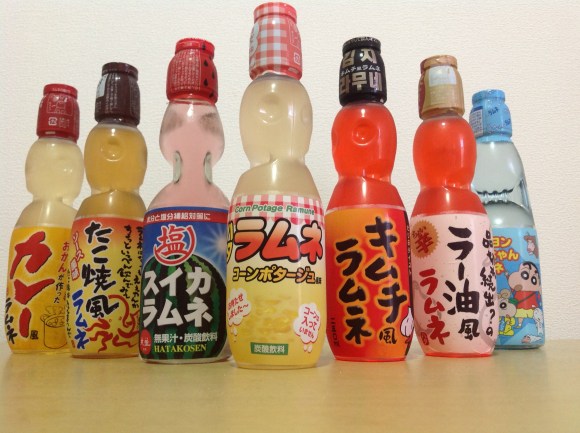 Ramune was one of the first carbonated beverages in Japan and can still be found today in various supermarkets or at festivals and public baths around the country. Over a century after its first appearance, Japanese customers have tended to go for the big name colas, which has in turn caused Ramune producers, such as Osaka’s Hata, to come up with some novel flavors in an effort to stir up interest.
Ramune was one of the first carbonated beverages in Japan and can still be found today in various supermarkets or at festivals and public baths around the country. Over a century after its first appearance, Japanese customers have tended to go for the big name colas, which has in turn caused Ramune producers, such as Osaka’s Hata, to come up with some novel flavors in an effort to stir up interest.
Most recently, a corn flavored Ramune was developed and has celebrated 100,000 bottles sold since its release in March. In honor of this, I picked up some of Hata’s more unique flavors for a whirlwind review of these often overlooked Japanese sodas.
First a little background on Ramune
Alexander Sim was a Scottish pharmacist who moved to Japan in the latter part of the 19th century. As was the trend with pharmacists of that time, he developed a carbonated beverage called mabu soda (marble soda). It was a hit due to its sweet taste…and because people thought it prevented cholera.
The name was a reference to the Codd Neck bottles which held the drink. Codd Neck bottles were the premier choice for carbonated drinks at the time. The gas pressure inside the bottle would hold a marble against the opening thus sealing it. For more on Codd Neck bottles see the end of this report.
The name Ramune came from the English “lemonade”, which describes Mabu Soda’s lemony taste, not unlike 7-Up or Sprite. The bottles fell out of use for other beverages around the world but are still used for Ramune to this day.
Salted Watermelon Ramune
I figured I would start with the tamest of the specialty flavors, Salty Watermelon. Although I was shocked to learn that people put salt on watermelon after last year’s Salty Watermelon Pepsi, I still imagined it to taste like straight watermelon.
On opening the bottle it released a strong yet very pleasant aroma of watermelon. Although it certainly smelled like straight up watermelon, I was surprised by the taste. The flavor of the salted watermelon was a lot smoother and far more delicious than watermelon alone. The salt taste was there but in a behind the scenes kind of way, working only to enhance the watermelon experience. An excellent start to this Ramune journey!
Corn Potage Ramune
This latest special flavor comes following the success of corn potage (corn soup) GariGariKun ice pops from last year. Hata figured if it could work for popsicles, why not pop?
After opening the bottle I could get a very subtle hint of corn. Actually there seemed to be a buttery scent to it as well. As a big fan of corn and butter, this was very promising. However, after drinking it, I felt something was a little off. The smell gave me the sense of something warm and creamy, but of course being a soda it was very thin, bubbly and cold. The corn taste was pretty authentic but kind of clashed with the texture.
I would describe the Corn Potage Ramune as cool and interesting, but not especially delicious on par with other pops. That being said, it’s definitely worth trying at least once just for the weird experience of it all.
Takoyaki Ramune
Takoyaki is a piece of octopus fried inside a ball of batter along with other ingredients and covered in sauce, mayonaise, and flakes of dried fish. It’s a delicious snack that can often be found in roadside food stands, particularly in Osaka, which boasts “the best takoyaki in Japan.” Still it’s hard to imagine how they got this particular flavor into a drink.
When I opened this bottle, it foamed over a little so I used my mouth to catch it quickly before smelling. I immediately received a shock; it tasted just like takoyaki sauce! Takoyaki sauce is somewhat similar to BBQ sauce in other countries. After drinking some more, I began to really get into this flavor. The taste of the sauce gave the drink a zesty tinge that fit perfectly with the sweetness and yet was completely original for a soda flavor. It might have just been my imagination, but I could have sworn it had an aftertaste of octopus.
Rayu Ramune
Rayu is a thin sesame oil-based sauce with chili peppers and sometimes other seasonings like garlic mixed in. Naturally in these hot summer days, chili sauce is the perfect remedy.
At first this drink had a savory smell but didn’t seem very spicy. Still, I winced as I went for the first sip. Surprisingly, it didn’t taste very spicy. It did taste like peppers and had a hearty flavor to it, but was rather mild. A few seconds later though, a spicy aftertaste came out from the back of my throat. Also, I coughed exactly like I do when I eat real spicy foods.
I can only assume the carbonation may have “protected” my tongue from taking in the spiciness. Even after swishing the drink around in my mouth, the spiciness never hit until I swallowed it. This was a really interesting drink and not bad, but probably not one I’d go for again.
Curry Ramune
After the chili sauce soda, I wasn’t expecting a hugely spicy experience with Curry Ramune. Also, Japanese curry tends to be on the milder side. However, the label read “Osaka mom’s homemade curry” which sounded promising.
This soda had the mildest smell of the bunch. After sniffing hard at it, I could get a faint mixture of sweet and savory. The taste was also pretty subdued. In fact, it was more like the regular lemon-lime flavor of Ramune with just a hint of curry and a similar spicy after taste to the Rayu Ramune.
The taste is fine, but really too similar to original Ramune. If you don’t want to get too adventurous with your soda flavors, this one would be the best choice.
Kimchi Ramune
Having easily gone through the Rayu and Curry flavored Ramune, I wasn’t expecting much from the one modeled after Korea’s (and my) favorite spicy pickled vegetables. However, taking an initial whiff made my head snap back. This was the real deal and smelled identical to kimchi!
The taste too mimicked kimchi eerily closely. The savoriness of the vegetables with that zing from fermenting were both amazingly captured in this drink! And sure enough, that same spicy kick came in the back of my throat, but this time was accompanied by a veggie aftertaste. Even more surprising than the similarity with real kimchi was how well this taste worked in soda form. It’s damn good!
Overall, I’d give first place to Kimchi Ramune, with Takoyaki Ramune in a close second and Salted Watermelon taking up third place. They all had their own unique charm though, so if you’re looking for a different way to cool down in Japan this summer, try out one of these reinvented versions of a century-old Japanese beverage.
Hata Co.: Website
All Photos: RocketNews24
How to open a bottle of Ramune
Codd neck bottles can be tricky to open. Here’s a quick guide on how to do it.
After peeling off the plastic wrapper on top of the bottle, a little plastic piece will probably fall off. You might think this was a poorly made cap, but actually it’s the opener.
Inside the neck you’ll see a glass or plastic marble pressed up against the mouth.
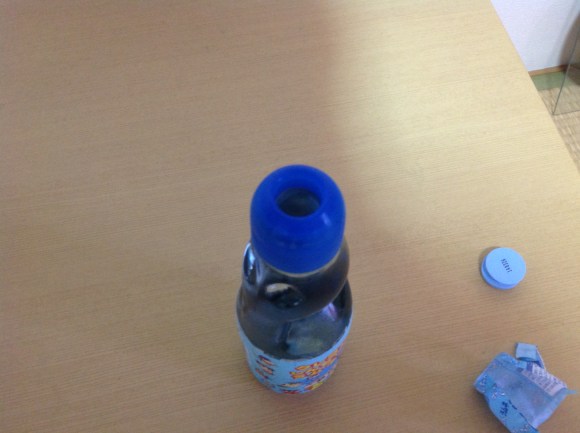
First take off the ring around the opener and put it over the marble.
This is very important: you must smack the opener swift and firmly. Doing it too slowly may cause soda to fire out in all direction resulting in… this.
Then enjoy your drink!
Ramune can be tricky to find. I bought all these at a souvenir shop: Ichi Biri Ryu located near the Dotombori Bridge.



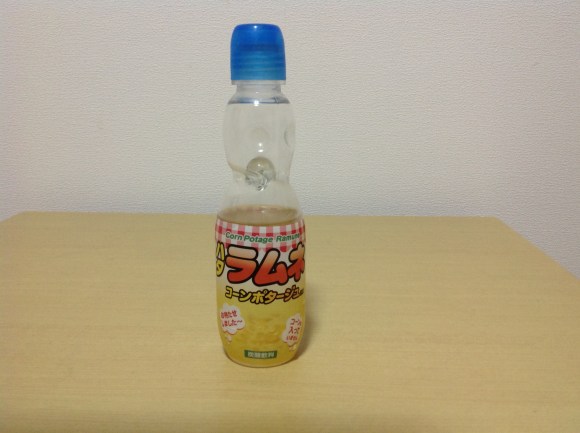
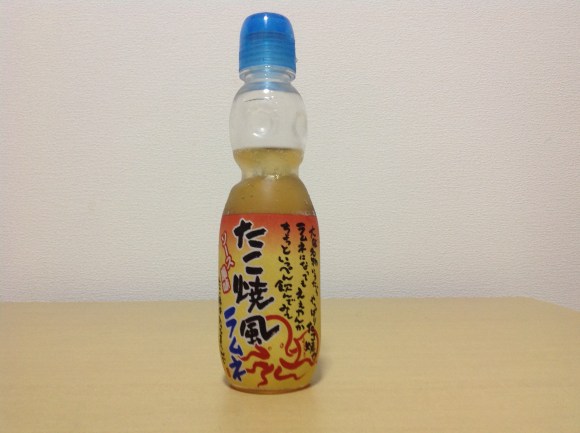
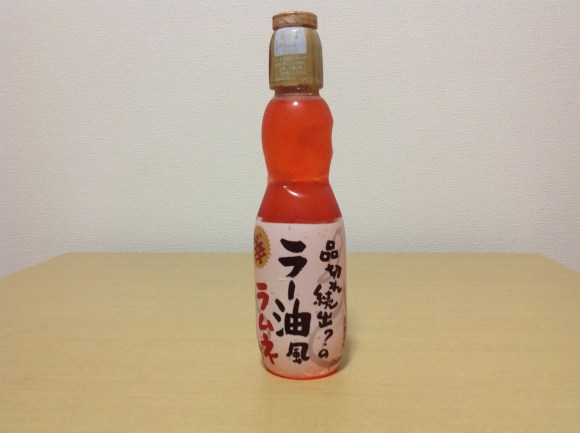
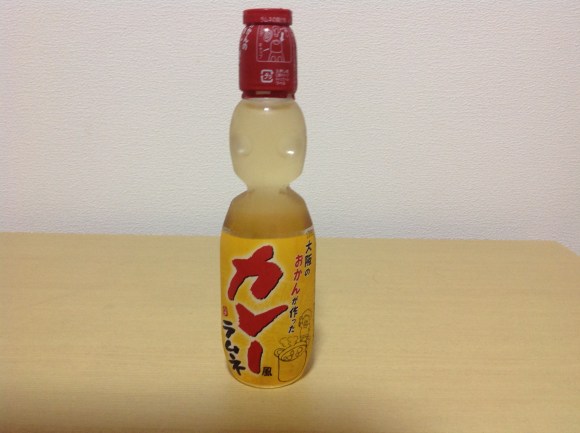
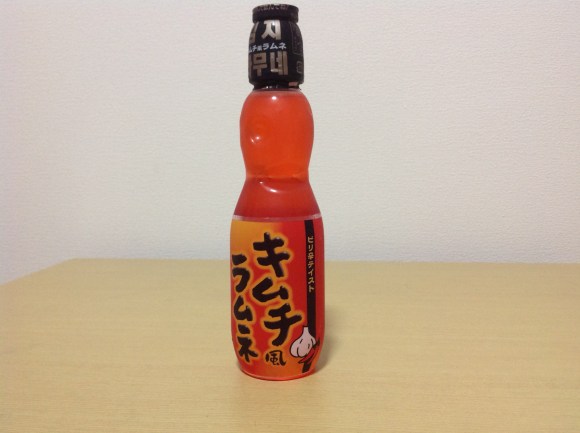
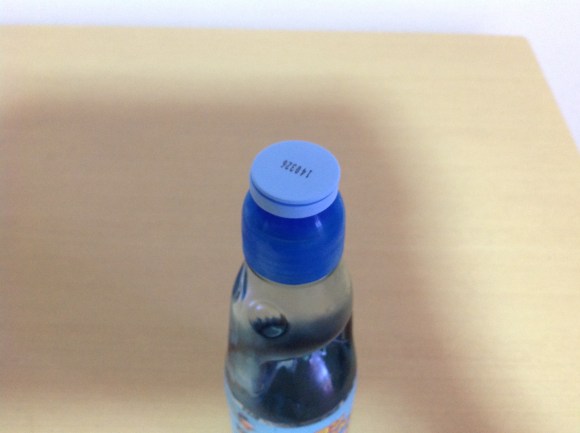
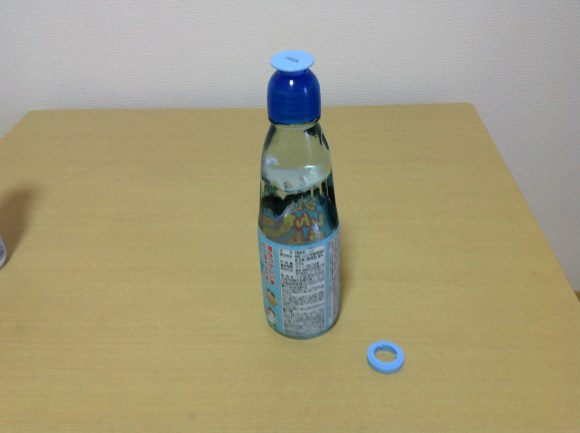
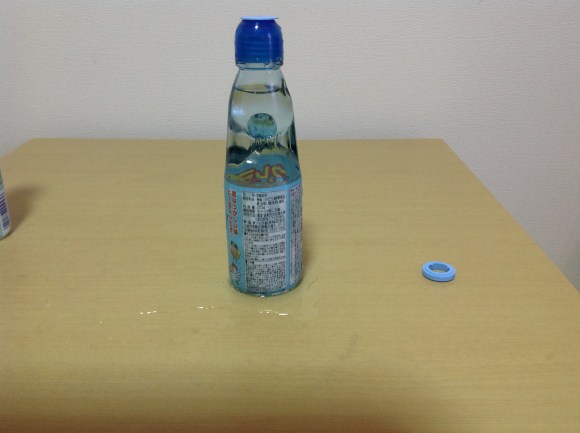

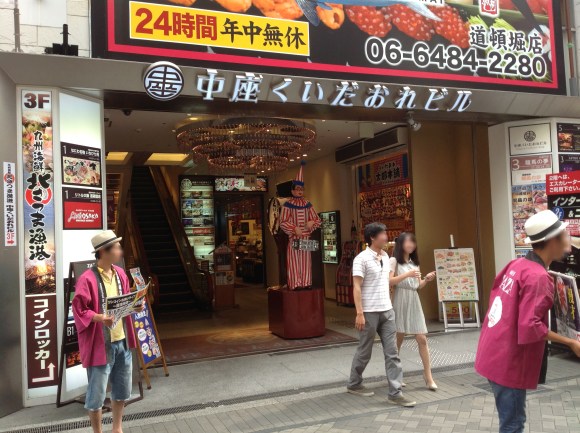
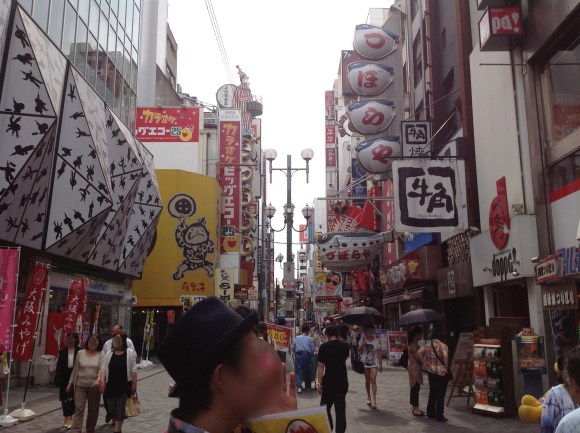
 Can French fry and instant yakisoba-flavored sodas surpass kimchi as Japan’s best strange ramune?
Can French fry and instant yakisoba-flavored sodas surpass kimchi as Japan’s best strange ramune? A touch of class and glass brings out the best in Japan’s Hata Premium soda pop
A touch of class and glass brings out the best in Japan’s Hata Premium soda pop Bacon soda’s new contender is here – Say hello to unagi cola!
Bacon soda’s new contender is here – Say hello to unagi cola! We try an ice cream bar in chili pepper oil, begin to think the internet is just screwing with us
We try an ice cream bar in chili pepper oil, begin to think the internet is just screwing with us Salt and Pepper Gourmet Beer VS just putting salt and pepper in beer yourself【Taste test】
Salt and Pepper Gourmet Beer VS just putting salt and pepper in beer yourself【Taste test】 Hayao Miyazaki says Happy New Year to Studio Ghibli fans with new art for Year of the Horse
Hayao Miyazaki says Happy New Year to Studio Ghibli fans with new art for Year of the Horse Pizza Hut Japan’s hot lucky bags are perfect for a New Year’s pizza party
Pizza Hut Japan’s hot lucky bags are perfect for a New Year’s pizza party Check out this 8m robot that appeared on Tokyo’s waterfront【Video】
Check out this 8m robot that appeared on Tokyo’s waterfront【Video】 McDonald’s Japan is changing the ingredients in Chicken McNuggets
McDonald’s Japan is changing the ingredients in Chicken McNuggets Pitch-black Black Belt udon noodles are a visual roundhouse, but do they taste good?【Taste test】
Pitch-black Black Belt udon noodles are a visual roundhouse, but do they taste good?【Taste test】 Harajuku’s new permanent Tamagotchi shop is filled with cuteness and a surprising lack of poop
Harajuku’s new permanent Tamagotchi shop is filled with cuteness and a surprising lack of poop How to speak Japanese like a gyaru【2024 edition】
How to speak Japanese like a gyaru【2024 edition】 Japan abolishes skirts from policewoman uniforms nationwide
Japan abolishes skirts from policewoman uniforms nationwide Princesses, fruits, and blacksmiths: Study reveals the 30 most unusual family names in Japan
Princesses, fruits, and blacksmiths: Study reveals the 30 most unusual family names in Japan Hello Kitty Choco Egg figures are an adorable trip through three periods of Japanese pop culture【Pics】
Hello Kitty Choco Egg figures are an adorable trip through three periods of Japanese pop culture【Pics】 Starbucks Japan ready to get Year of the Horse started with adorable drinkware and plushies【Pics】
Starbucks Japan ready to get Year of the Horse started with adorable drinkware and plushies【Pics】 7-Eleven Japan’s ramen-cooking robot whipped us up a bowl of noodles【Taste test】
7-Eleven Japan’s ramen-cooking robot whipped us up a bowl of noodles【Taste test】 Cyberpunk anime meets traditional culture in Ghost in the Shell gold leaf Japanese changing screens
Cyberpunk anime meets traditional culture in Ghost in the Shell gold leaf Japanese changing screens 7 great places to see Mt. Fuji from without having to climb it
7 great places to see Mt. Fuji from without having to climb it Japan’s otoshidama tradition of giving kids money at New Year’s gets a social welfare upgrade
Japan’s otoshidama tradition of giving kids money at New Year’s gets a social welfare upgrade We found possibly the quietest Japanese-style hotel in Tokyo’s bustling Shinjuku district
We found possibly the quietest Japanese-style hotel in Tokyo’s bustling Shinjuku district Lacquerware supplier to emperor of Japan and Pokémon team up for new tableware
Lacquerware supplier to emperor of Japan and Pokémon team up for new tableware Sumo Sanrio! Hello Kitty and pals team up with Japan Sumo Association for new merch【Pics】
Sumo Sanrio! Hello Kitty and pals team up with Japan Sumo Association for new merch【Pics】 Can a dirty butthole make you filthy rich in Japan? We’re starting a New Year’s lottery experiment
Can a dirty butthole make you filthy rich in Japan? We’re starting a New Year’s lottery experiment 7-Eleven Japan starts new temporary luggage storage service in over 300 branches
7-Eleven Japan starts new temporary luggage storage service in over 300 branches Disillusionment at Tsukiji’s tourist-target prices led us to a great ramen restaurant in Tokyo
Disillusionment at Tsukiji’s tourist-target prices led us to a great ramen restaurant in Tokyo Starbucks teams up with 166-year-old Kyoto doll maker for Year of the Horse decorations【Photos】
Starbucks teams up with 166-year-old Kyoto doll maker for Year of the Horse decorations【Photos】 Tokyo considering law requiring more trash cans following litter increase in heavily touristed area
Tokyo considering law requiring more trash cans following litter increase in heavily touristed area Tokyo’s Tsukiji sushi neighborhood asks tour groups to stay away for the rest of the month
Tokyo’s Tsukiji sushi neighborhood asks tour groups to stay away for the rest of the month Nintendo’s Kirby now delivering orders at Kura Sushi restaurants, but not in Japan
Nintendo’s Kirby now delivering orders at Kura Sushi restaurants, but not in Japan Tokyo event lets you travel back in time, for free, to celebrate 100 years since Showa era start
Tokyo event lets you travel back in time, for free, to celebrate 100 years since Showa era start Sanrio theme park in Japan announces plans to expand into a Sanrio resort
Sanrio theme park in Japan announces plans to expand into a Sanrio resort Japan may add Japanese language proficiency, lifestyle classes to permanent foreign resident requirements
Japan may add Japanese language proficiency, lifestyle classes to permanent foreign resident requirements Survey asks foreign tourists what bothered them in Japan, more than half gave same answer
Survey asks foreign tourists what bothered them in Japan, more than half gave same answer Japan’s human washing machines will go on sale to general public, demos to be held in Tokyo
Japan’s human washing machines will go on sale to general public, demos to be held in Tokyo Japan’s deadliest food claims more victims, but why do people keep eating it for New Year’s?
Japan’s deadliest food claims more victims, but why do people keep eating it for New Year’s? We deeply regret going into this tunnel on our walk in the mountains of Japan
We deeply regret going into this tunnel on our walk in the mountains of Japan Studio Ghibli releases Kodama forest spirits from Princess Mononoke to light up your home
Studio Ghibli releases Kodama forest spirits from Princess Mononoke to light up your home Major Japanese hotel chain says reservations via overseas booking sites may not be valid
Major Japanese hotel chain says reservations via overseas booking sites may not be valid Put sesame oil in your coffee? Japanese maker says it’s the best way to start your day【Taste test】
Put sesame oil in your coffee? Japanese maker says it’s the best way to start your day【Taste test】 No more using real katana for tourism activities, Japan’s National Police Agency says
No more using real katana for tourism activities, Japan’s National Police Agency says Starbucks Japan reveals new sakura drinkware collection, inspired by evening cherry blossoms
Starbucks Japan reveals new sakura drinkware collection, inspired by evening cherry blossoms Updated cherry blossom forecast shows extra-long sakura season for Japan this year
Updated cherry blossom forecast shows extra-long sakura season for Japan this year “Pepsi Ghost” brings a mysterious new flavor for Halloween in Japan
“Pepsi Ghost” brings a mysterious new flavor for Halloween in Japan “RAAA”: The most appropriate name for a habanero pepper-flavored 34 percent alcohol drink
“RAAA”: The most appropriate name for a habanero pepper-flavored 34 percent alcohol drink
Leave a Reply